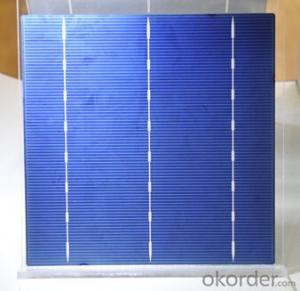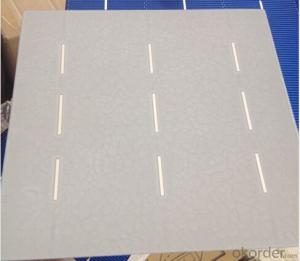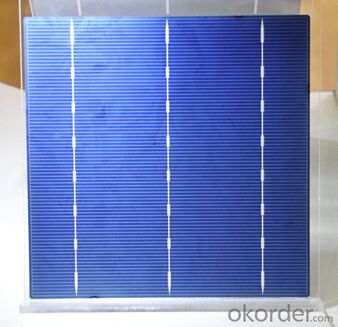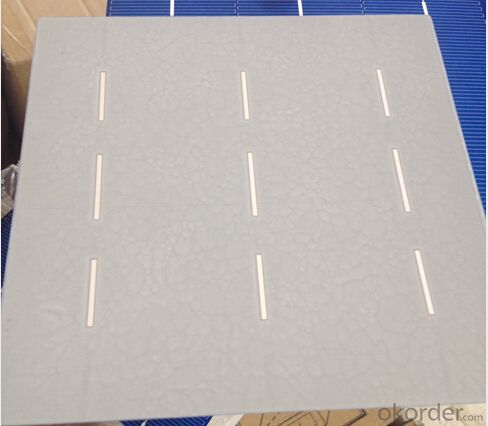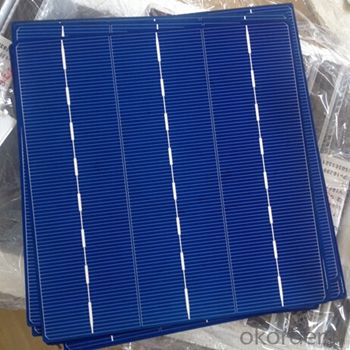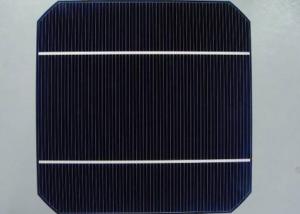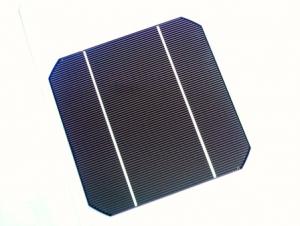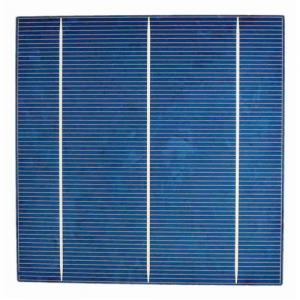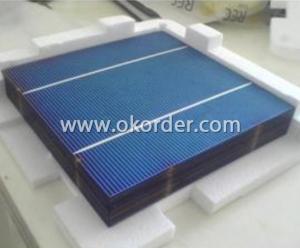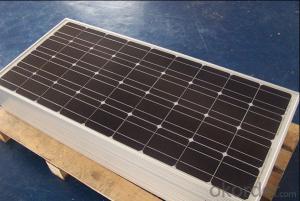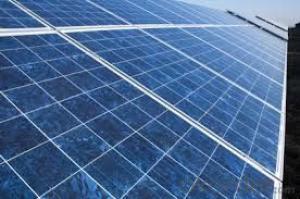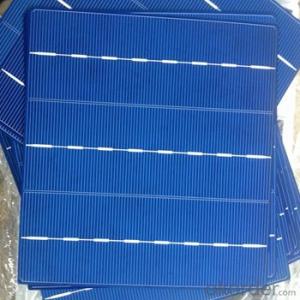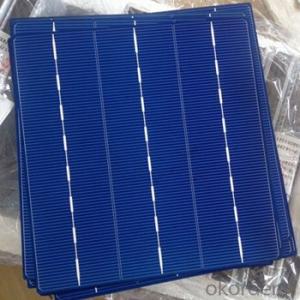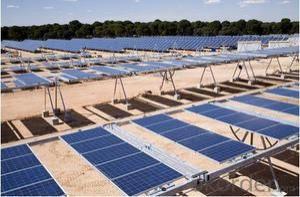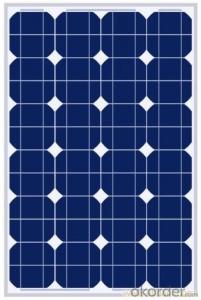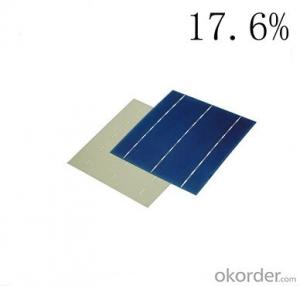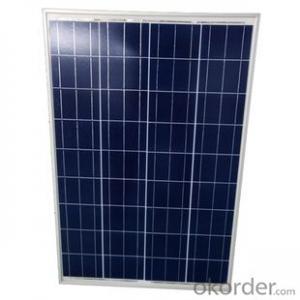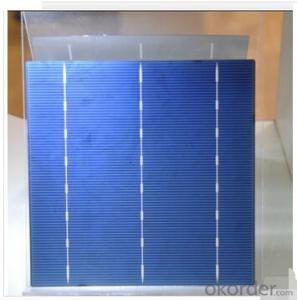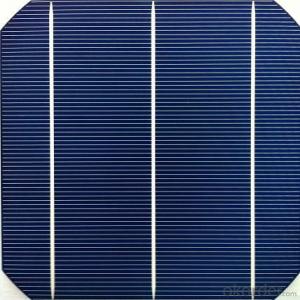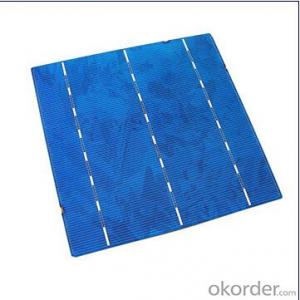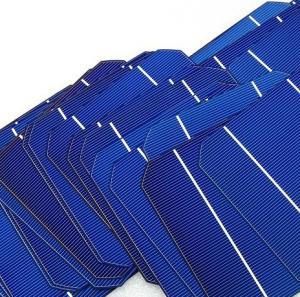High-Quality Polycrystalline Solar Roof Shingles with Stable Quality
- Loading Port:
- Shanghai
- Payment Terms:
- TT or LC
- Min Order Qty:
- 5000 PCS
- Supply Capability:
- 8000000 PCS/month
OKorder Service Pledge
OKorder Financial Service
You Might Also Like
Polycrystalline Silicon Solar Cells:
Solar cells is made by solar wafer, it has three categories of solar cell right now, monocrystalline polycrystalline and thin film,These cells are entirely based around the concept of ap-n junction, which is the critical part of solar module, it is the part that can convert the light energy into electricity, the thickness is from 180um to 200um, with even busbars to conduct electricity, textured cell can decrease diffuse reflection; they are often electrically connected and encapsulated as a module. Photovoltaic modules often have a sheet of glass on the front (sun up) side, allowing light to pass while protecting semiconductor wafers from abrasion and impact due to wind-driven debris, rain, hail, etc. Solar cells are also usually connected in series in modules, creating an additive voltage. Connecting cells in parallel will yield a higher current;With high quality and stable quality. Our Cells can greatly improve the performance of Solar Modules.
Polycrystalline Silicon Solar Cells Advantage:
• High efficiency and stable performance in photovoltaic conversion.
• Advanced diffusion technique ensuring the homogeneity of energy conversion efficiency of the cell.
• Advanced PECVD film forming, providing a dark blue silicon nitride anti-reflection film of homogenous color and attractive appearance.
• High quality metal paste for back surface and electrode, ensuring good conductivity, high pulling strength and ease of soldering.
• High precision patterning using screen printing, ensuring accurate busbar location for ease with automatic soldering a laser cutting.
Specification:
Mechanical data and design |
Format - 156 mm × 156 mm ± 0.5 mm |
Thickness- - 200 μm ± 20 μm |
Front (-) - 1.4 mm bus bars (silver),blue anti-reflection coating (silicon nitride) |
Back (+) - 2 mm wide soldering pads (silver) back surface field (aluminium) |
Temperature Coefficient of Cells |
Voc. Temp .coef.%/K -0.364%/K |
Isc . Temp .coef.%/K +0.077%/K |
Pm. Temp. coef.%/K -0.368%/K |
Electrical Characteristic |
Efficiency (%) Pmpp (W) Umpp (V) Impp (A) Voc (V) Isc (A) |
18.00% 4.380 0.538 8.141 0.634 8.740 |
17.90% 4.356 0.538 8.097 0.634 8.725 |
17.80% 4.331 0.537 8.065 0.633 8.710 |
17.70% 4.307 0.536 8.035 0.632 8.695 |
17.60% 4.283 0.535 8.006 0.631 8.680 |
17.50% 4.258 0.534 7.974 0.630 8.665 |
17.40% 4.234 0.533 7.944 0.629 8.650 |
17.30% 4.210 0.532 7.914 0.628 8.635 |
17.20% 4.185 0.531 7.88 -- 0.627 -- 8.620 |
17.10% 4.161 0.530 7.851 0.626 8.605 |
17.00% 4.137 0.529 7.820 0.625 8.590 |
Intensity Dependence |
Intensity [W/m2] Isc× [mA] Voc× [mV] Pmpp |
1000 1.00 1.000 1.00 |
900 0.90 1.000 0.90 |
800 0.80 0.99 0.80 |
500 0.50 0.96 0.49 |
300 0.30 0.93 0.29 |
200 0.20 0.92 0.19 |
IV Curve

Solar Panel Images:
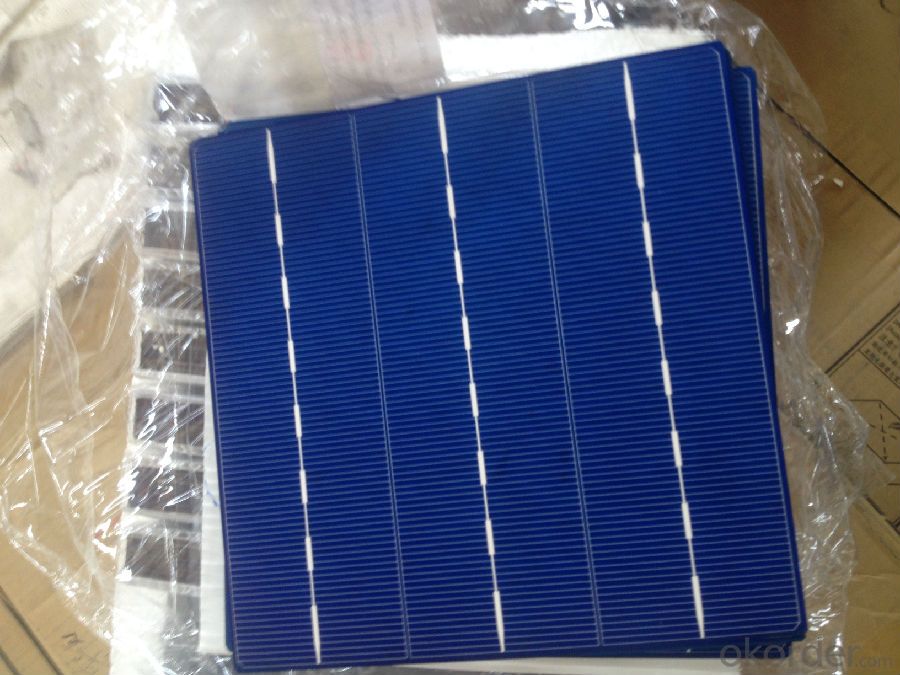
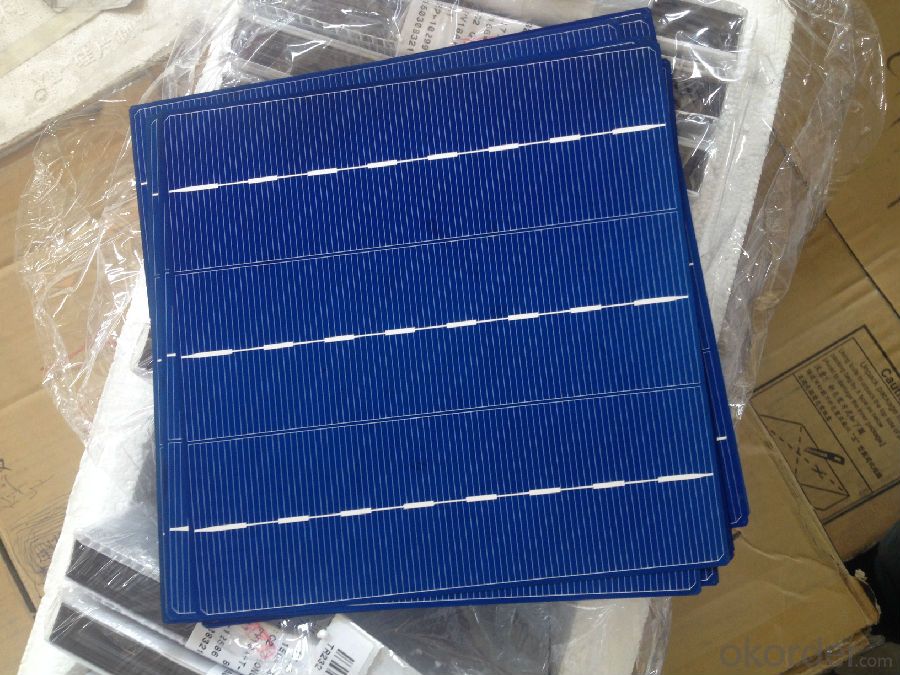
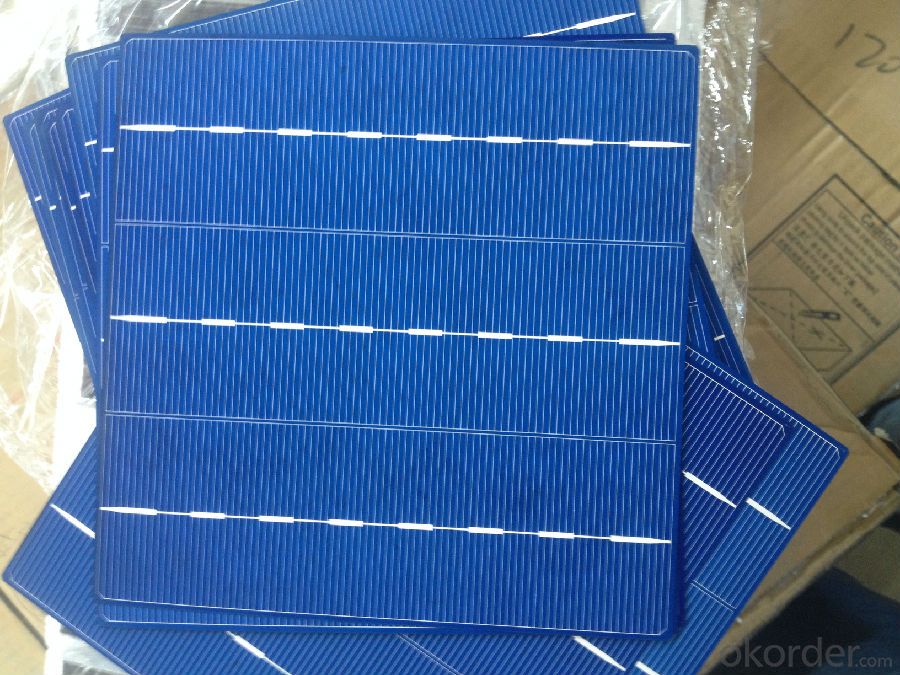
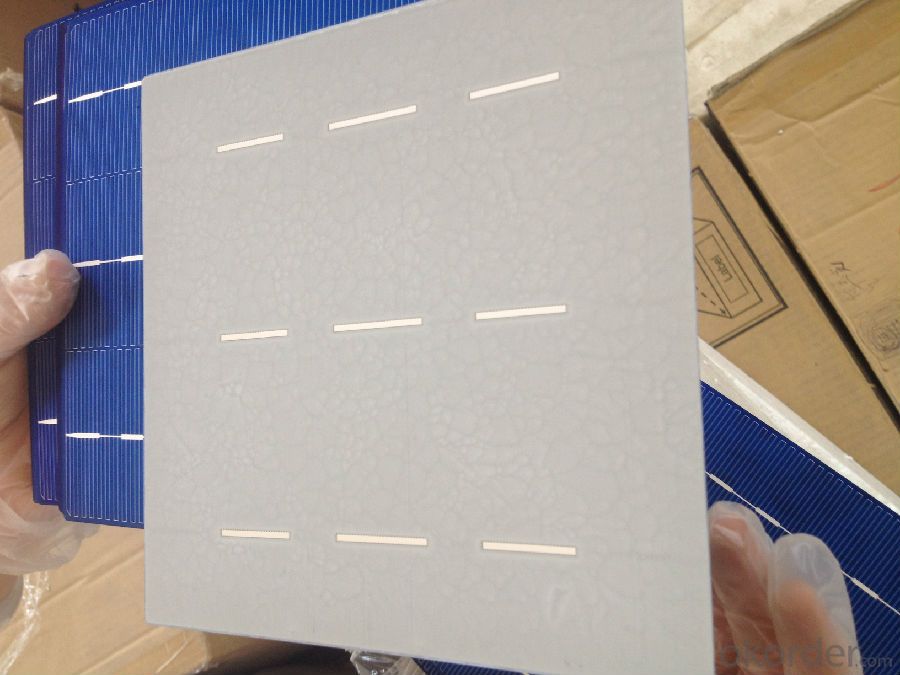
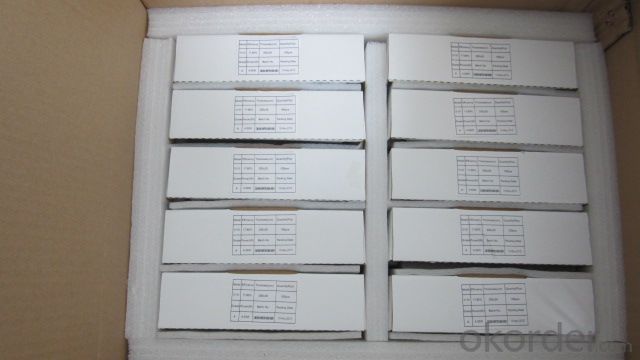
FAQ
We have organized several common questions for our clients,may help you sincerely:
①What price for each watt?
It depends on the efficiency of the solar cell, quantity, delivery date and payment terms.
②How long can we receive the product after purchase?
In the purchase of product within three working days, We will arrange the factory delivery as soon as possible. The pecific time of receiving is related to the state and position of customers.Commonly 7 to 10 working days can be served.
③Can you provide the peripheral products of the solar panels, such as the battery, controller, and inverter? If so, can you tell me how do they match each other?
Yes, we can, we have two companies for solar region, one is CNBM International, the other is CNBM engineering Co.
We can provide you not only the solar module but also the off grid solar system, we can also provide you service with on grid plant.
④What is your warranty of solar cell?
Our product can promise lower than 0.3% open box crack, we support claim after opening the box if it has crackm color difference or sth, the buyer should give pictures immediately, we can not accept the claim after the solar cell has assembled to solar panel.
• Timeliness of delivery
• ⑤How do you pack your products?
We have rich experience on how to pack the solar cell to make sure the safety on shipment, we could use wooden box or pallet as buyer's preference.
⑥ Can you do OEM for us?
Yes, we can.
In today's energy shortage situation, countries have stepped up the pace of development of photovoltaic. United States proposed "solar pilot project" are intended to reduce the cost of solar photovoltaic power generation to 2015 levels of commercial competition; Japan also made a total power generation of PV reached 28GW in 2020. In the context of the development of low-carbon economy, governments’ acceptance of photovoltaic power generation increased gradually.
Applications of Solar Cell Huge:
1. Traffic areas, such as beacon lights, traffic / railway signal lamps, traffic warning / marker lamps, lights, altitude obstacle light, highway / railway wireless telephone booth, unattended Road class power supply.
2. Communication / communication field: Solar unattended microwave relay stations, cable maintenance stations, broadcasting / communication / paging power system; rural telephone carrier photovoltaic systems, small communication equipment, soldiers GPS power supply.
3. Petroleum, marine, meteorology areas: oil pipelines and reservoirs gate cathodic protection solar power systems, oil drilling platform life and emergency power supply, marine testing equipment, meteorological / hydrological observation equipment.
4. Household lighting power supply: such as garden lights, street lamps, portable lamps, camping lamps, light hiking, fishing lamp, black light, tapping lights, energy saving lamps.
5. The PV power plant: 10KW-50MW independent photovoltaic power plants, scenery (CHAI) complementary power plants, various large parking with charging stations.
6. Solar building solar power and building materials, renders the future of large buildings to achieve electricity self-sufficiency is a major development direction of the future.
7. Other areas include: (1) supporting the car: solar car / electric vehicle battery charging equipment, automobile air conditioners, ventilation fans, cold boxes, and so on; (2) solar hydrogen fuel cell power generation system of regeneration; (3) seawater desalination equipment supply; (4) satellite, spacecraft, space solar power stations.
- Q: Can solar cells be used for powering electric water heaters?
- Yes, solar cells can be used to power electric water heaters. By harnessing sunlight and converting it into electricity, solar cells can provide a sustainable and renewable energy source to heat water in electric heaters. This helps reduce reliance on traditional power grids and contributes to a greener and more eco-friendly way of heating water.
- Q: What is the impact of electromagnetic interference on solar cell performance?
- Electromagnetic interference can have a significant impact on solar cell performance. It can disrupt the normal operation of solar cells by introducing unwanted electrical signals that interfere with the proper functioning of the cells. This interference can lead to decreased efficiency and power output of the solar panels, as well as potential damage to the cells themselves. Therefore, it is crucial to minimize electromagnetic interference to ensure optimal performance and longevity of solar cells.
- Q: How much energy can a solar cell generate?
- The amount of energy a solar cell can generate depends on various factors such as its size, efficiency, and the amount of sunlight it receives. On average, a solar cell can generate anywhere from a few watts to several hundred watts of power.
- Q: How does the solar cell work in terms of photochemical conversion?
- If the incorporation of trivalent boron (B), it is in the absence of an electronic state, will produce holes, known as P-type semiconductor, the two semiconductors, known as PN junction.
- Q: How do solar cells impact energy independence?
- Solar cells impact energy independence by harnessing the power of the sun to generate electricity, reducing reliance on traditional fossil fuels. By providing a clean and renewable source of energy, solar cells contribute to reducing greenhouse gas emissions and increasing energy self-sufficiency, ultimately enhancing a country's energy independence.
- Q: How do solar cells perform in areas with limited sunlight?
- Solar cells do not perform as efficiently in areas with limited sunlight, as their energy production is directly dependent on the amount of sunlight available. However, advancements in solar cell technology have improved their ability to generate electricity even in low light conditions.
- Q: What is the history of solar cell development?
- The history of solar cell development dates back to the 19th century when the photovoltaic effect was first discovered by French physicist Alexandre-Edmond Becquerel in 1839. However, it wasn't until 1954 that the first practical silicon solar cell was developed by Bell Labs scientists. This breakthrough led to the commercialization of solar cells and their initial use in space applications, such as powering satellites. Throughout the 1960s and 1970s, solar cell technology continued to advance, primarily driven by research and development efforts in the United States. The energy crisis of the 1970s further fueled interest in renewable energy, including solar cells, leading to increased investment and technological advancements. In the 1980s and 1990s, solar cells became more efficient and affordable, making them increasingly popular for off-grid applications, such as powering remote locations and providing electricity to rural communities. Governments and organizations worldwide started implementing policies and incentives to promote solar energy adoption. In the early 2000s, there was a significant growth in the solar industry, driven by technological improvements, increased manufacturing scale, and declining production costs. This led to the widespread adoption of solar panels for residential and commercial use, as well as grid-connected solar power plants. Today, solar cells continue to evolve, with ongoing research focused on improving efficiency, durability, and reducing costs. The integration of solar cells into various applications, such as building materials and consumer electronics, further expands their potential. The solar industry plays a crucial role in the global shift towards clean and sustainable energy sources.
- Q: Can solar cells be used in electric fence systems?
- Yes, solar cells can be used in electric fence systems. Solar cells can generate electricity from sunlight and convert it into usable energy, which can power an electric fence system. This eliminates the need for traditional grid power or batteries, making it a cost-effective and environmentally friendly option.
- Q: Can solar cells be used for water heating applications?
- Yes, solar cells can be used for water heating applications. Solar thermal collectors, which incorporate solar cells, can absorb sunlight and convert it into heat energy, which can be used to heat water for various purposes such as domestic hot water, swimming pools, and space heating.
- Q: Whether the solar cell is light can produce electricity
- A solar cell is a device that converts light energy directly into electrical energy by photoelectric effects or photochemical effects.
Send your message to us
High-Quality Polycrystalline Solar Roof Shingles with Stable Quality
- Loading Port:
- Shanghai
- Payment Terms:
- TT or LC
- Min Order Qty:
- 5000 PCS
- Supply Capability:
- 8000000 PCS/month
OKorder Service Pledge
OKorder Financial Service
Similar products
Hot products
Hot Searches
Related keywords
